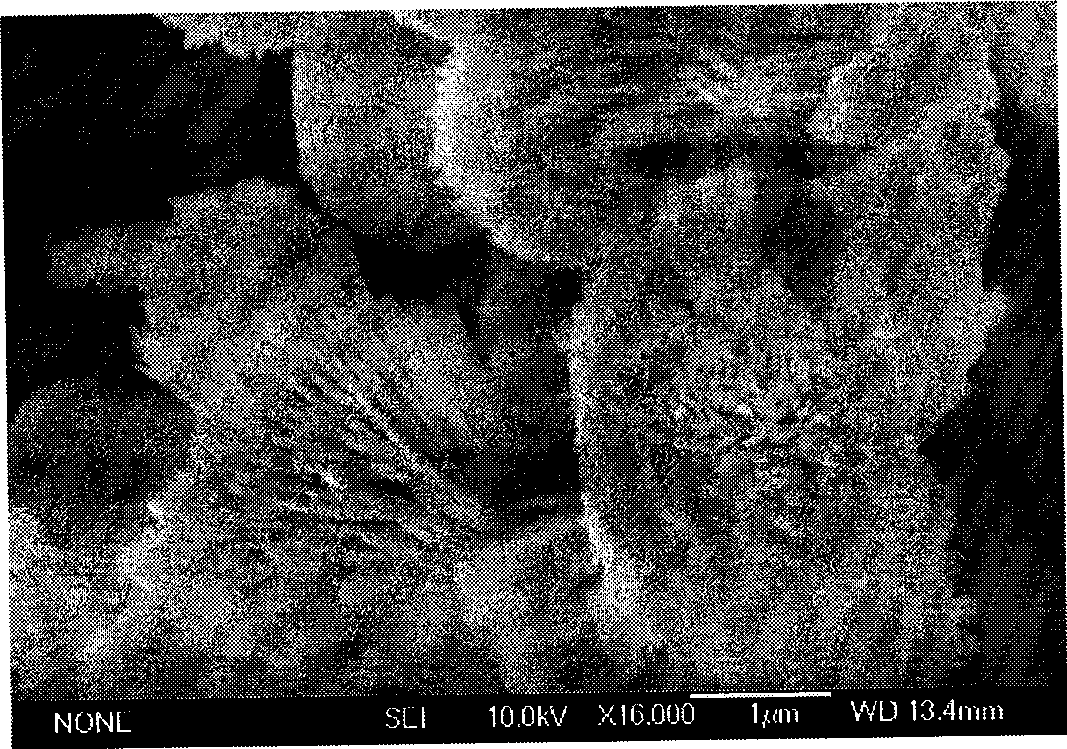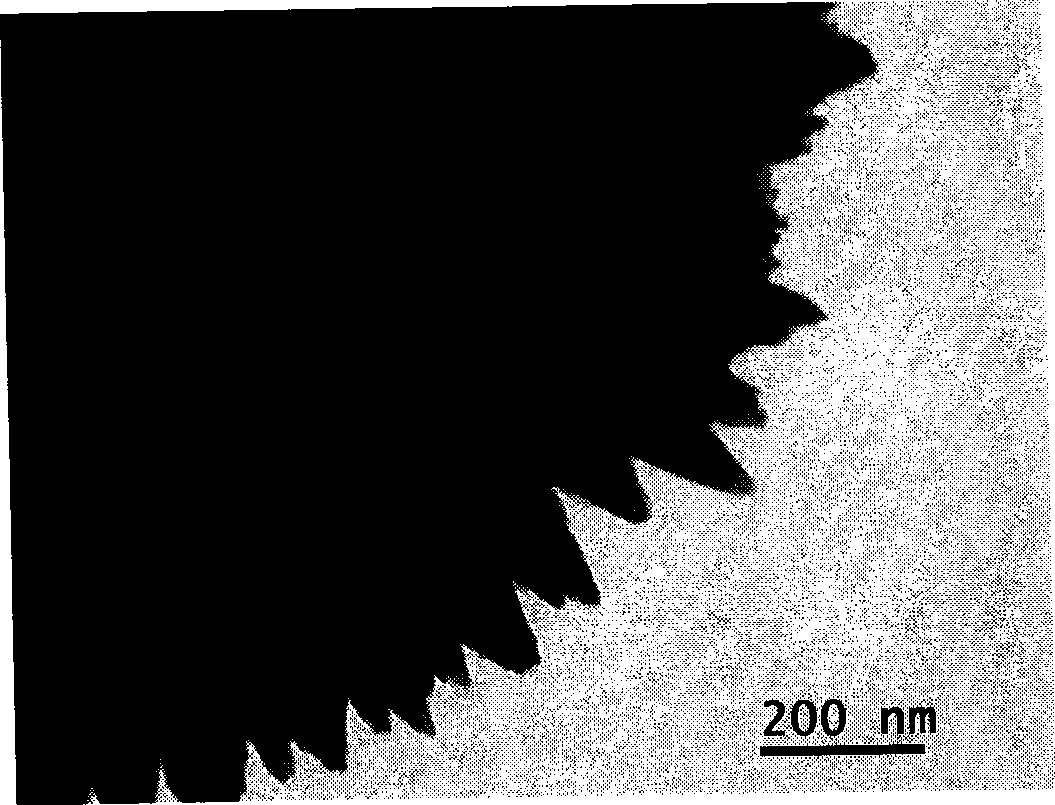Method for preparing ordered antimony-based oxide self-assembled nanometer cluster and nano-wire materials
A technology of oxides and self-assembly, applied in chemical instruments and methods, antimony compounds, inorganic chemistry, etc., can solve the problems of inability to obtain ordered self-assembled structures of nanorods
- Summary
- Abstract
- Description
- Claims
- Application Information
AI Technical Summary
Problems solved by technology
Method used
Image
Examples
Embodiment 1
[0017] Weigh 0.1026g (0.45mmol) of antimony trichloride and dissolve it in 15ml of absolute ethanol to obtain a colorless and transparent solution. While stirring, add 30ml of deionized water dropwise to the ethanol solution of antimony trichloride, continue to stir for 0.5 hours after the dropwise addition, and transfer the obtained milky white mixed solution to a stainless steel water liner lined with polytetrafluoroethylene. In a thermal reaction kettle, put it in an oven, and react at 180°C for 2 hours. After the reaction, the white precipitate obtained is washed with alcohol and deionized water for several times, and dried at 80°C to obtain antimony-based oxides (including antimony oxychloride Sb 8 o 11 Cl 2 and antimony trioxide Sb 2 o 3 ) Nanoflower clusters composed of nanorod bundles. Its SEM photos and TEM photos are attached figure 1 , 2 As shown, it can be found that the structure of the prepared antimony oxychloride is a nano-flower cluster microsphere comp...
Embodiment 2
[0019] Weigh 0.1026g (0.45mmol) of antimony trichloride and dissolve it in 15ml of absolute ethanol to obtain a colorless and transparent solution. While stirring, add 30ml of deionized water dropwise to the ethanol solution of antimony trichloride, continue to stir for 0.5 hours after the dropwise addition, and transfer the obtained milky white mixed solution to a stainless steel water liner lined with polytetrafluoroethylene. In a thermal reaction kettle, put it in an oven, and react at 180°C for 20 hours. After the reaction, the white precipitate obtained is washed with alcohol and deionized water for several times, and dried at 80°C to obtain antimony-based oxides (including antimony oxychloride Sb 8 o 11 Cl 2 and antimony trioxide Sb 2 o 3 ) nanowires. Its SEM photos and TEM photos are attached image 3 , 4 As shown, it can be seen that when the reaction time is prolonged, the nanoflower cluster structure composed of the original nanorod bundles continues to self-a...
PUM
 Login to View More
Login to View More Abstract
Description
Claims
Application Information
 Login to View More
Login to View More - R&D
- Intellectual Property
- Life Sciences
- Materials
- Tech Scout
- Unparalleled Data Quality
- Higher Quality Content
- 60% Fewer Hallucinations
Browse by: Latest US Patents, China's latest patents, Technical Efficacy Thesaurus, Application Domain, Technology Topic, Popular Technical Reports.
© 2025 PatSnap. All rights reserved.Legal|Privacy policy|Modern Slavery Act Transparency Statement|Sitemap|About US| Contact US: help@patsnap.com



